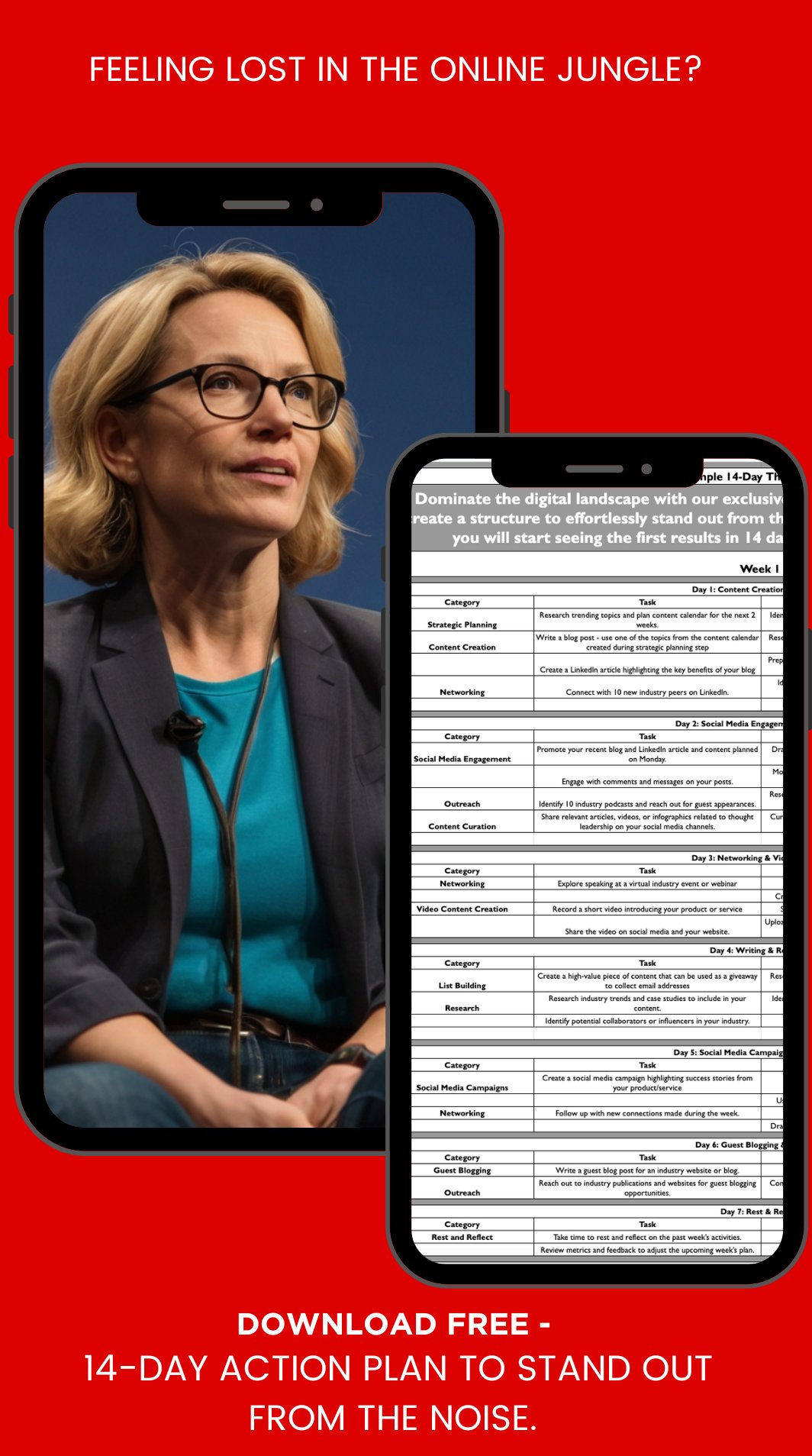I do not have to tell you that video is important for marketing.
But for every person who loves being on camera, there are dozens of us who detest it…
If you are like me and cringing every time you hear that video is the “next best thing” you may find this article helpful.
It helps you craft an initial video strategy WITHOUT a requirement to be live on camera (at least not all the time).
And shows you ways to make extra money from your video.
Table of Contents
ToggleYour Video Marketing Success Starts with a Strong Plan

Just like with any content, your first video marketing steps have nothing to do with video creation.
If you want to create a strong marketing strategy, answer some of these core questions before creating your first videos.
1 – What is the purpose of my videos?
Are you trying to build brand awareness or teach people with these tutorial-like videos or are you trying to use your videos for direct sales.
Your answers will set the foundation for the rest of your strategy. They will inform the format, the distribution strategy, the video length and more.
Brand awareness videos are shorter, more inspirational and less sales-oriented. They tell a story of your brand and help build trust with the viewers.
Tutorial videos are 10-15 min long (or longer) and each tackle a specific topic in detail.
Educational videos similar to the tutorials these teach a specific concept.
Best Sales videos follow the same formula: they tell a story (just like brand-awareness videos) but they also paint a picture of the transformation that your solution brings them.
Lifestyle videos are short, inspirational pieces to make a personal connection with the viewers. People want to see the real you behind the brand. These are typically less polished and scripted.
2 – What are my key topics?
Narrow down a list of topics for your videos based on your audience. Research some of the key questions your audience is asking for your industry:
Are they struggling to get started? Create beginner-level videos
Do they need to know which tools to use? Focus on reviewing the tools you use to help them solve the issues they face.
Are they looking for specific steps on resolving their problem? Create videos around specific solutions they may need.
If you are struggling to find specific topics do some research to find inspiration:
1 – Look through social media profiles for top leaders in your industry. Note specific topics they cover in detail.
2 – Search for top videos on YouTube and note the topics they cover.
3 – Join LinkedIn or Facebook groups and note questions your audience is asking
4 – Look through Reddit or Quora questions
5 – Create a LinkedIn, Twitter or Facebook poll
6 – Pay attention to trending topics on Twitter
7 – Look at the top industry publications and analyze headlines they are using.
8 – Interview your colleagues, partners and customers.
3 – What are my focus keywords?
For each of the video marketing topics, create a list of focus keywords. To keep videos interesting (and to help video search engines to rank your videos higher) create 3 levels of keywords:
Level 1 – Generic keywords – e.g., Getting Started with Video marketing, Video Marketing for Beginners, 3 Steps of Video Marketing Strategy
Level 2 – More specific keyword – These keywords start to go deeper onto a specific topic . e.g., Getting started with Facebook Video Marketing or Making Money with Facebook Video Marketing or Getting started with YouTube Video Marketing or How to make money with YouTube Video marketing
Level 3 Niche keywords – Facebook Video Marketing Strategies, 5 Winning Facebook Video Marketing scripts, 10 tools for Facebook Video Marketing
Create an editorial calendar of videos that will cover all 3 levels of keywords. If you want to be seen as an expert in your industry, go deep into your key topics by focusing on the niche keywords.
4 – What is the format of my video?
Are these live shows, tutorials, screengrabs, or demos?
You can mix and match the formats and learn what it works but do have a structure in place before you start. For example, you can do 2 video tutorials and 1 live interview a month.
Decide on the initial length of these and then video analytics to determine what works. And the best news for those you do not enjoy being on camera. You do not always have to be the front and center of each video.
Many of the video formats allow you to be in the background. Here are just some of the formats to consider
- Interviews and Q&A sessions with top leaders in the industry.
- Testimonial Videos from your clients or partners
- Facebook, Instagram or YouTube Live Streaming from events
- Instagram or Facebook stories
- Explainer Videos
- Unboxing videos
- Story-telling videos with slides
- Text overlay videos
- Animated videos
- Teaser videos
- Webinars
- Screengrab Tutorials and Walk-throughs
- Highlight Reels
- YouTube shorts
You could go funny, knowledge-based, or just a narrative video. Remember your customers are ALL different and different styles might resonate with different people. You will need to experiment with a few styles before you decide which style works best for your target audience.
5 – What is my video script?
Creating a script is crucially important to your videos. Regardless of whether you’re doing a live interview or telling a story in a funny compilation of video clips, always create and edit a simple script before you start filming.
You do not have to write out each word of your video (some may prefer to do that, but it is not necessary). Focus on they key points you want to make and the flow of the video.
If you do end up writing a script, try not to read it or you may end up sounding like a robot. Bring your personality into your video. It is ok to make a mistake (or stutter) – this can be edited later.
Imagine that you are talking to your best friend while recording your video – this will help you with sounding more conversational.
Our winning video script formula
1- Start with a “Hook” or an open-ended question that sparks curiosity and motivates people to keep watching.
2 -Tell a story that is focused on your main benefit.
3 – Give people a tangible solution
4 – Close with the Call to Action.
Your Call To Action does not have to be “Buy Now”, it can also be “Watch my Next Video”, “Subscribe to my channel” or “Learn More”.
Whatever your Call to Action is, always be clear on what it will be BEFORE you film or edit your video. Build your “hook” and your story around it.
IMPORTANT: Make the first 15 seconds of your count. You need something to hook them right in the beginning.
Avoid long introductions. Your customers do care about who you are. They are only interested in what value you can provide them.
Keep it interesting and switch scenes every 15-20 seconds.
6 – What are my promotion and distribution strategies?
The secret of every successful marketer is not in creating a lot of original content. It is in creating one high-quality piece of content that you can share 100+ of times.
Aim to create videos that you can transform into a variety of different formats:
1 – Full-length video that you can share on all of your key platforms (YouTube, Facebook Instagram, LinkedIn, Twitter )
2 – Embed it into your blog (with a transcript) and then share it again on all of your platforms
3 – Integrate your video into your newsletter and share with all of your subscribers.
4 – Create 10-15 second snippets of the key points you cover in the video and share on your key platforms.
Use a 3-2-1 content-sharing formula
Share it 3 times the first week you publish the content
Share it 2 times the following week
Share it at least 1 time a month from the rest of the year.
PRO TIP: If your audience loves your videos and you grow a strong fan base, you may also be eligible for Monetization features.
CONCLUSION:
Video marketing is important to your success, but it only works if you have a strong plan. Spend some time thinking, researching and planning. Create an initial strategy and editorial calendar. Do a regular content refresh (once or twice a year). Create fewer pieces of high-quality engaging content.









